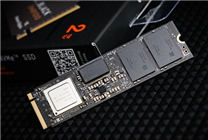Summary:
- Apple’s iPhone 17 series introduces a significant standard model upgrade, featuring increased storage capacity.
- The price of the iPhone 17 Pro has risen, sparking debates over the influence of tariffs and pricing strategies.
- Analyst insights suggest that Apple employs psychological pricing to enhance perceived value in its product lineup.
Apple’s iPhone 17 Series: Strategic Pricing and Upgrades
On September 21, Apple unveiled its much-anticipated iPhone 17 series, marking an exciting milestone in smartphone innovation. The standard model has received thoughtful upgrades, most notably an increase in storage capacity, with a robust 256GB now serving as the entry-level option.
Despite keeping the standard version’s price point stable, Apple has adjusted the starting price for the iPhone 17 Pro, raising it from 7,999 yuan to 8,999 yuan in China, reflecting a $100 increase internationally. This price adjustment has led to speculation regarding external factors, including U.S. tariffs.
In response to these speculations, Apple CEO Tim Cook has refuted claims linking price hikes to tariffs, asserting that the pricing strategy stands independently of such influences. However, skepticism prevails among consumers and media outlets, with many believing Cook’s statement is more about maintaining goodwill with the U.S. government than an actual reflection of pricing mechanics.
Understanding the Price Increment
The potential reasons behind the iPhone 17 series’ pricing adjustments have been a focal point for analysis, with intriguing insights from industry experts. Notably, the iPhone 17 Pro Max’s high-end 2TB version is priced at a staggering 17,999 yuan (about $1,999). This pricing tactic is identified as an "anchor" strategy, a method in which a company’s pricing of the highest tier product makes other options appear more cost-effective by comparison.
Cook has previously employed similar techniques with products like laptops and iPads, strategically positioning higher-priced items to entice consumers toward less expensive models. By presenting a high anchor price, consumers are naturally drawn to consider lower models as more affordable, thereby creating a sense of value.
The Psychology of Pricing
This pricing strategy effectively taps into consumer psychology. Many perceive the 18,000-yuan iPhone 17 Pro Max as exorbitantly priced, leading them to view the 12,000 or 14,000-yuan variants as great deals. This approach can generate a psychological "savings effect," where customers feel they are receiving a significant bargain simply by opting for a slightly lower-priced model.
To summarize the core aspects of the iPhone 17 series pricing:
- Price Adjustments: While the standard model’s price remains unchanged, the iPhone 17 Pro sees a notable increase, stirring discussions about market influences.
- Psychological Pricing: Analysts believe Cook’s strategic pricing is designed to highlight value across Apple’s product line, capitalizing on consumer perceptions.
- Market Strategy: By anchoring with high-end pricing, Apple effectively channels consumer interest toward lower-priced options, reinforcing its reputation for delivering value.
Apple’s unique pricing approach is a calculated move to not only position its products in the market but also to guide consumer perception. With the ongoing evolution of the iPhone lineup, it is clear that behind each pricing decision lies a complex interplay of strategy, psychology, and market dynamics.
Regardless of individual opinions on pricing and tariffs, the iPhone 17 series represents Apple’s continued commitment to innovation and consumer engagement within a competitive marketplace. As technology evolves, so too will the tactics employed by industry leaders, ensuring that consumers remain at the forefront of decision-making processes.









